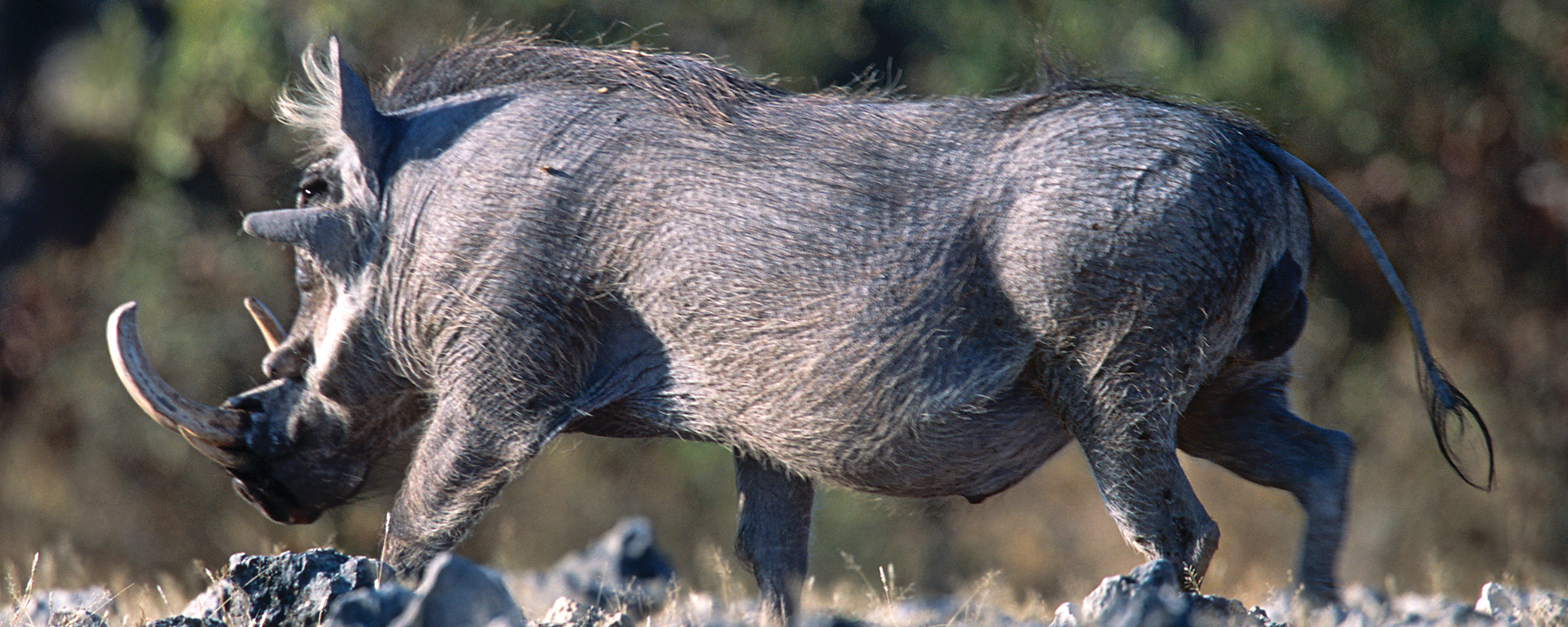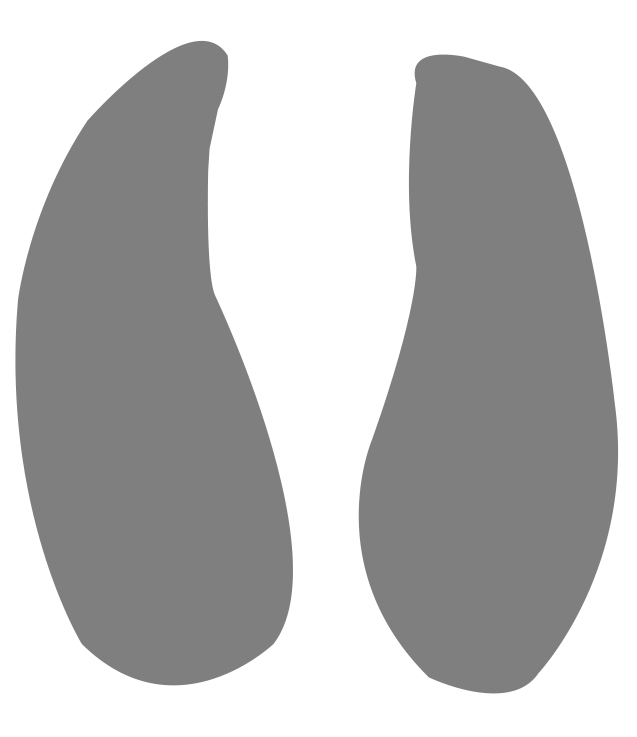
WARTHOG
Phacochoerus aethiopicus
W arthogs normally occur in small groups of females with young, often also in small groups of three or four young males. Mature males are usually solitary. They join the females only during the rutting season. During the rut the boar follows the female, emitting a very strange sound, rather like that of a distant tractor.
The best place to find trophy animals is at a waterhole, because it is normally difficult to spot warthogs in tall grass. It is also possible to spot and stalk warthogs from a high vantage point in mountainous or undulating terrain. Although warthogs don’t see very well, their sense of hearing and smell is very good.
With a little experience it is easy to differentiate a male from the rest of the group. Males are substantially heavier and have much longer bodies in relation to their short legs. The head of the male is also considerably broader and coarser than that of the female. The male has four facial warts – one underneath each eye and a smaller one just above the snout. The best means of identification is that the females have only the top set of warts. Males often have a large, dark oily stain underneath their eyes, the result of a glandular excretion. A conspicuous white goatee is a further characteristic of a female warthog. The tusks of the female are thinner and mostly more curved. The most obvious indication of age in warthogs is the appearance of the top warts. In old males they are long, thick and even droop a little.
The tusks of a big male swing outwards with a wide arc. A sign of age on a tusk is the obvious tapering towards its base, with recognisable rings that look like year marks. Those of younger boars are smooth and the circumference is at its biggest at the base.
Trophy animals can be found everywhere in Namibia, especially in the areas around Okahandja, the triangle between Hochfeld-Otjiwarongo and Otavi.
WARTHOG
Phacochoerus aethiopicus
| Shoulder Height: | 126-29″ |
| Weight: | 1Males: 150-300 lbs | Females: 110-150 lbs |
| Life expectancy: | 15 years |
| Food: | Grass, roots, tubers, also scavenges |
| Rutting season: |
June, July, August |
WARTHOG TRACK

